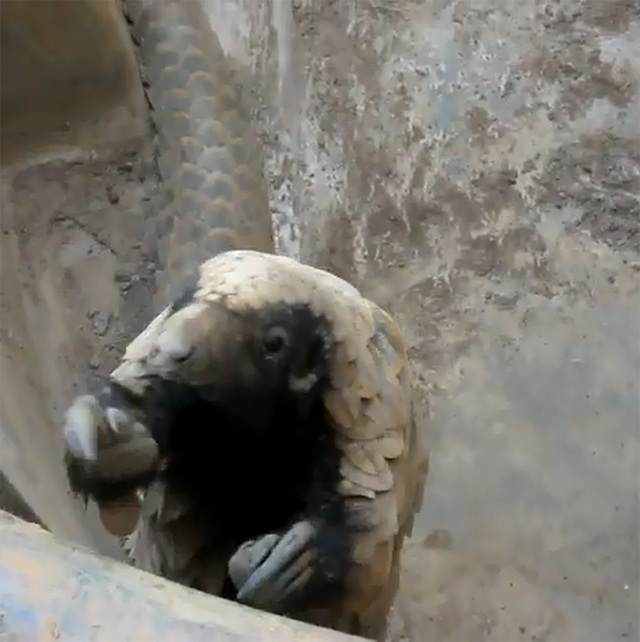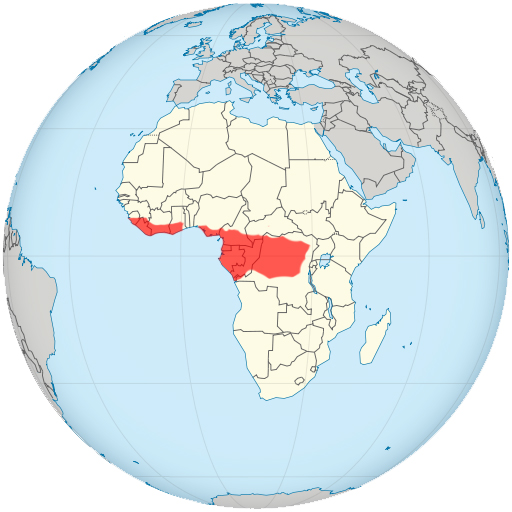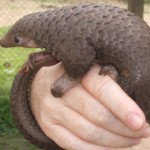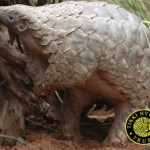The Long-tailed pangolin is a world record holder!

Suited in an armor of beautifully colored scales, Africa’s Long-tailed pangolin (Uromanis tetradactyla) is the smallest and most arboreal of all of the world’s eight pangolin species.
As its name suggests, this toothless critter is known for its extremely long, prehensile tail.
It reaches body lengths of 30-35 centimeters, while its tail alone can measure an additional 50-60 cm and contains 46-47 vertebrae (apparently a record amongst all mammals)!
This impressive appendage is so strong that it can even support the animal’s entire body weight while it hangs from tree branches.
A bare pad is located at the tip of the tail, which serves a sensory role and aids in gripping — a unique adaptation for arboreal life.
They inhabit tropical, moist riverine and swamp forests — never too far from water.
Although they are also sometimes found in lowland agricultural areas, experts suggest these scaly anteaters are mainly restricted to lesser known, seldom-penetrated habitats.
It is there that Uromanis tetradactyla (sometimes referred to as the ‘black-belled pangolin’) spends the vast majority of its time in trees, feeding on ants, termites, and other invertebrates.
They may occasionally descend to the ground to go to pools and rivers for a fresh drink or even a little swim.
Unlike most pangolins, this species is frequently active during the day, which allows it to forage without competition from the larger three-cusped pangolin (Phataginus tricuspis).
After a gestation period of about 140 days, females give birth to only a single young at a time.
Their breeding is thought to be almost continuous throughout the year.
This species is said to be the least frequently encountered of all African pangolins.
Sadly, they are hunted as bushmeat and are also targeted for their scales and other body parts, which are used in superstitious folk medicines and cultural rituals.
- IUCN Conservation Status: Least Concern (since 2008)
- Protection: Present in many protected areas and protected from international trade under CITES Appendix II
- Range: West and Central Africa, including Cameroon, Congo, Côte d’Ivoire, Democratic Republic of Congo (DRC), Equatorial Guinea, Gabon, Ghana, Liberia, Nigeria, Sierra Leone. Its presence is uncertain in Angola, Benin, Burundi, Central African Republic, Rwanda, Togo, and Uganda. The core of its range lies in Congo, DRC, and Gabon.
The long-tailed pangolin’s total population is thought to be declining, but apparently not fast enough to be of significant concern.
As this is likely the least known of all pangolin species, more research on its biology, ecology, and behavior is imperative.
Despite these fragile creatures’ presence in many protected areas, there is a strong need for the development and enforcement of protective legislation throughout their range.
Enjoy this video of one of the most adorable sights you’ll ever see: a wild long-tailed pangolin in Sierra Leone!
Sources:
“Uromanis tetradactyla,” International Union for the Conservation of Nature Red List of Threatened Species, accessed 28 January, 2012
“Black-bellied pangolin (Uromanis tetradactyla),” Arkive, accessed 28 January, 2012
Image #1 via YouTube
Image #2 via Wikimedia Commons, with range added by author






![Pangolin Rescue! [Video]](https://www.pangolins.org/wp-content/uploads/2012/03/pangolin-fell-down-well-150x150.jpg)
2 Comments
Comments are closed.